What’s Lurking in Your Dog Food? - Everything You Need to Know About Corn, Gluten, Pea Starch, and Wheat in Dog Food
- Last updated on February 2, 2023
- By: Caroline Stowe
Have you ever wondered what’s actually in your dog food? A quick glance at the ingredients in a bag of dog food can be overwhelming. We often see words like corn, gluten, pea starch, and wheat.
Does this mean it’s bad for our dogs? The answer is not so simple. Let’s go beyond the buzzwords and break down why grains are used in dog food and whether they are actually beneficial or should be avoided altogether.
Understanding the Role of Grains in Dog Food
Benefits of Grains in Dog Food
Following are some of the benefits of adding grains to your pup’s diet.
Great Source of Carbohydrates
Grains are a source of carbohydrates, which provide your pup with energy. Dogs have evolved to consume some carbohydrates from their diet, but there is debate about how much is ideal for them.
For example, some pet owners prefer diets that contain no grains because they believe that grain-free diets are more natural for their dogs since ancient canines did not consume grains. However, there is no scientific evidence to support this claim yet.
What does science tell us? Scientists have observed that dogs fed grain-inclusive foods tend to have lower serum triglycerides and less body fat than those fed grain-free diets.
This could indicate that some carbohydrates may help prevent obesity in dogs if they are given in moderation as part of an overall balanced diet.
Good Source of Fiber
Grains are a good source of fiber, which helps keep your pup’s digestive system healthy and functioning properly.
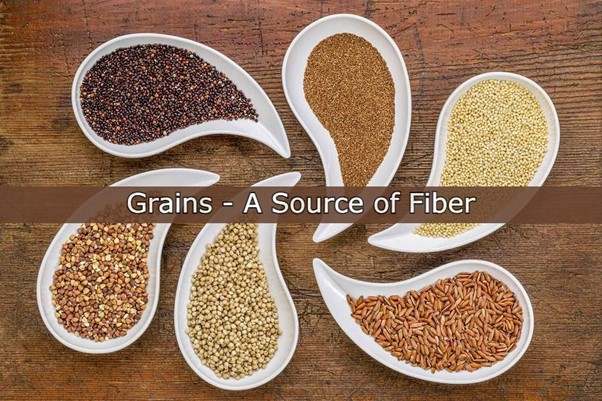
Balanced Blood Sugar
Grains in dog food can also help your pup maintain balanced blood sugar levels since they contain complex carbohydrates instead of simple sugars that can spike glucose levels quickly and then drop them just as fast.
This is especially beneficial for older pets who may be more prone to diabetes or other metabolic diseases.
Cost-effective
Grain-based dog foods are usually easier on the wallet compared to meat-based recipes since grains are typically more affordable ingredients to produce than animal proteins.
Help Reduce Dog Stool Odors
Grain-based dog food can help reduce odors coming from your pet’s stool because they have higher fiber content than many other types of dog food ingredients.
This helps with digestion and absorption of nutrients in their gastrointestinal tract leading to fewer odoriferous bowel movements.
Overall Healthy Dog Body
Many grain-based kibbles also contain added vitamins and minerals like vitamin D3 for bone health or omega fatty acids for healthy skin and coat condition which allows pet owners to supplement nutrition when it’s not possible to feed an entirely raw diet.
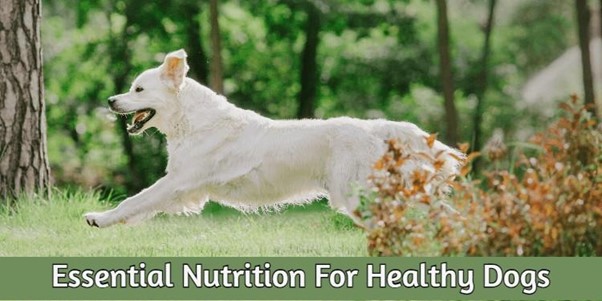
This helps ensure that our beloved furry friends always receive the essential nutrients they need regardless of diet type whether it’s grain or non-grain-based options.
Nutritional Benefits
Grains also contain a range of nutritional benefits such as B vitamins, iron, and zinc which can boost immunity and help keep their fur glossy.
Vitamins found in grains include vitamin B12 which helps maintain the nervous system; thiamine which is essential to energy production; and niacin which supports brain health.
Minerals such as iron helps form red blood cells and copper aids with bone formation.
Drawbacks of Grains in Dog Food
Following are some of the drawbacks of adding grains to your pup’s diet.
Hard to digest
One potential drawback of grains in dog food is that they can be difficult for some dogs to digest, leading to excessive gas or gastrointestinal issues such as diarrhea. Furthermore, these grains can contain higher levels of carbohydrates than are needed or desired by most dogs and can cause weight gain if consumed in excess. Additionally, grain-based diets may not always provide the balanced nutritional profile that a dog needs and could lead to dietary deficiencies in certain vitamins and minerals.
Toxins
Grains also can contain small amounts of toxins, such as mycotoxins, which are substances produced by fungi that can be toxic to animals when consumed in large quantities.
This can lead to a range of health issues for dogs that consume foods with high levels of these toxins over an extended period of time.
Additionally, some grains used in dog food may have been processed at high temperatures which could result in the destruction of essential nutrients needed for optimal canine health.
Allergens
Some grains are also known allergens for certain breeds of dogs and may cause skin irritation, itching, or hives due to their presence in the diet.
Certain grains used in dog food formulas often come from sources such as wheat or corn which are difficult for some dogs with sensitive digestive tracts to break down properly and fully absorb all the nutrients they need from the diet.

Lack of Taurine
Grains also lack adequate amounts of taurine and other essential amino acids that are necessary for proper cardiovascular functioning and overall physical health in dogs.
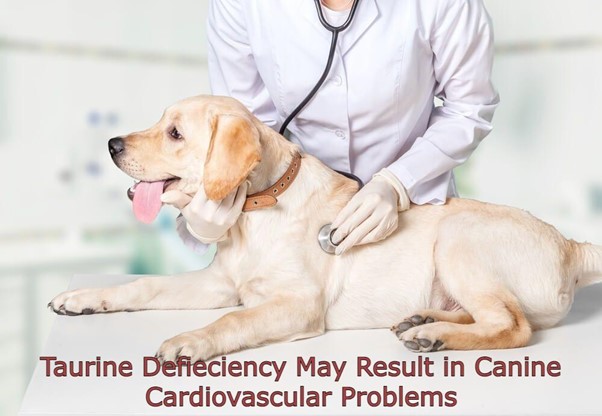
This deficiency in essential amino acids must then be compensated for either through supplementation or through other ingredients added into the formula such as meat-based proteins like chicken or fish meals instead of whole grain products like oats or barley.
Are Grains Good For Dogs?
So, what’s the verdict on grains? Ultimately, it depends on the individual dog and its dietary needs and preferences. Some dog breeds do better with grain-free diets while others do well with high-grain options.
Dog owners should consult their veterinarian before making any major changes to their pet’s diet and check labels carefully to make sure that all ingredients are safe for consumption by dogs.
Is Corn, Gluten, Pea Starch, and Wheat Good for Your Dog's Diet ?

A good diet is essential to keeping your pup healthy and happy. But when looking at the ingredients in your dog food, it can be hard to know what is actually good for them.
Let’s break down four common ingredients in dog food: corn, gluten, pea starch, and wheat. Are these items beneficial or should you steer clear?
Corn
Assuming your dog isn’t allergic to it, corn is usually safe for dogs. It has been a popular ingredient in pet food for many years due to its low cost and easy availability.
It can be a great source of energy and vitamins. It provides a significant amount of protein, carbohydrates, vitamins, and minerals. The only issue is that many pet foods contain too much corn as a cheap filler ingredient instead of more nutritious proteins like beef or chicken which may lead to obesity.
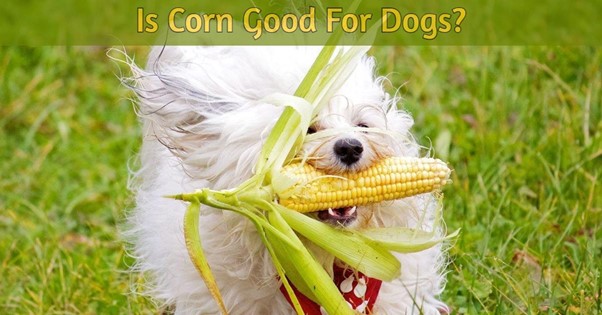
Another downside of corn is that it can cause allergies in some dogs and can be difficult to digest. However, if your pup does not have any sensitivities to corn-based products then it can still be an important source of nutrition in their diet.
So if you notice corn near the top of the list of ingredients on the bag of kibble you’re considering buying for your pup, it might be worth taking a look at other options.
Gluten
Gluten is a protein found in grains like wheat, barley, and rye which gives them their elasticity and texture. That being said, not all grains contain gluten, so there’s no need to completely avoid them altogether.
In moderation, gluten can provide essential vitamins and minerals as well as fiber to help keep your pup’s digestive system healthy. While some dogs might benefit from small amounts of gluten as part of a balanced diet, it should not be the main ingredient as this could cause health problems down the line.
Too much gluten can cause digestive upset or even allergies especially if the dog is sensitive to it. Therefore, it’s important to look out for this ingredient if you think your pup may have an intolerance or sensitivity.
Just make sure that any grain-based foods you buy don’t contain gluten or other potentially problematic ingredients for your pup.
Pea Starch
Pea starch is a carbohydrate derived from peas that can provide energy for your pup without adding too many calories.
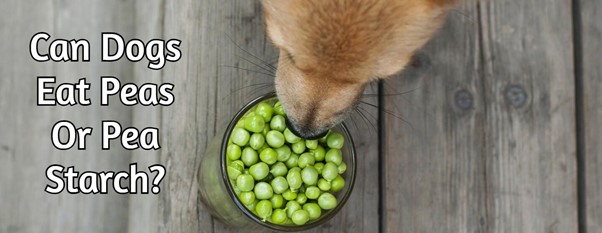
It is a great alternative to traditional grains like wheat or barley because it contains more protein than other grains but less fat than animal proteins like chicken or beef. It is made from dried peas and can also be used as an alternative to wheat flour in many pet foods or in grain-based starches like corn or wheat having fewer calories and more nutrients per serving.
Additionally, it is rich in fiber which helps promote digestion and can help keep your pooch feeling full longer between meals. It also provides essential amino acids which are necessary for overall health and wellness.
The downside of pea starch is that some dogs may not tolerate it as well as other ingredients so it’s important to check with your veterinarian before introducing pea starch into their diet.
It’s generally considered safe for most pups (unless they have an allergy to peas), but research suggests that it might not provide enough nutrition on its own to meet all of your pup’s nutritional needs.
Instead, look for foods that combine pea starch with other highly nutritious ingredients like whole grains and real meat proteins.
Learn more details about giving peas or pea starch to your dogs in the video below.
Wheat
Wheat is another type of grain that can be found in many popular commercial brands of dog food. This is due to its high nutrient content including Vitamin B6, magnesium, phosphorus, and zinc; all of which are necessary for optimal health.
Like other grains, wheat may contain some essential vitamins and minerals beneficial for your pup’s health but too much wheat can lead to digestive issues such as diarrhea or vomiting.
As long as wheat is used in moderation (less than 10% of total ingredients) then it shouldn’t pose any major health risks for most pups. Make sure you look out for signs of intolerance if introducing wheat into your pup’s diet.
Conclusion
To sum up, when considering whether or not your pup should eat grains in their diet it’s important to look at factors such as breed type, age, activity level, and overall health condition before making any big changes to your pet’s meal plan.
While understanding what goes into each type of ingredient can seem overwhelming at first – educating yourself about what different terms mean will help ensure you choose a high-quality product with all the right nutrients for your furry pal!
Monitor how they react after introducing each ingredient separately (as some may have intolerances) before adding more variety to their meals! And remember to always consult with a vet before making any major dietary changes.
With the right balance of nutrients from corn, gluten pea starch & wheat – you’ll soon have one very happy pooch on your hands ensuring that they get the nutrition they need without sacrificing taste or quality!
-
Author: Caroline Stowe
- Updated on February 2, 2023
Disclaimer: This article doesn’t intend to replace professional veterinary advice, nor should it be used as a substitute for veterinary services, diagnosis, or treatment. The content on this website, including information and opinions expressed herein, are intended for general informational purposes only. In case you have concerns or questions regarding your dog’s health and diet requirements, please consult your veterinarian before doing anything that might affect it.
DogPetGuide.com and the writer are not responsible or liable for any damage, liability, costs, or claims arising from any possible consequences of the reader’s action after reading this article.




